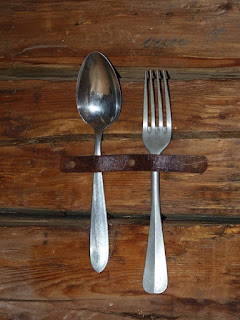 |
| Spoon and Fork |
First let's talk about the spoon. Spoon is one of the oldest cutlery. In ancient times, ancient spoons were made by exploiting natural materials such as from shells or stones formed, and at first the spoon lacked the current hold.
Not yet known the exact time when the spoon was first discovered. The ancient man used the bones of animals to be used as a spoon handle. Archaeological evidence found that in 1000 BC, the ancient Egyptians used spoons for religious purposes. Spoon is made of materials such as ivory, wood, and stone written, besides the spoon is also decorated with hieroglyphics (ancient Egyptian writing).
Meanwhile, in the days of the Greeks and Romans, spoons were made of bronze and silver, but the spoons were only used by the rich. In Britain, the documented evidence of the first spoon was in 1259 AD, during the reign of King Edward I. At this time, like the ancient Egyptians, spoons were not only used for eating, but also in ceremonies, ornaments and to demonstrate wealth and power . For example, the crowning of every English king is always continued with a ritual in which the new king will be anointed the ceremonial spoon.
During the Tudor period (1485-1603) and Stuart (1603-1714) in England, spoons increasingly played an important role. There is a habit in that period to give a spoon as a baptismal gift. Initially a set of spoon presents consisted of 12 spoons, but then added to one so as to amount to 13 to honor the figure of Christ.
After the spoon, now we turn to 'his partner', that is a fork. The fork itself has a long history. It is estimated that the earliest table forks were made in Ancient Egypt. The Qijia culture (2400-1900 BC) which is also part of Chinese culture is now known to have used a fork. A thousand years later, the popularity of forks in the Western world spread through the Silk Road to Venice, Italy. One of the earliest recorded records of a fork in Venice is from a story dating from the 11th century, namely when the daughter of the Byzantine marriage, Theodora Anna Doukaina with Domenico Selvo. This marriage makes a fork that is coated in gold as a dowry.
The popularity of forks began to develop during the 16th century AD because of the services of Catherine de Medici. He helped popularize forks (as well as pasta, olive oil, chianti and sweet and savory separation) in France after marrying King Henry II.
 |
| King Henry II |



0 Comments